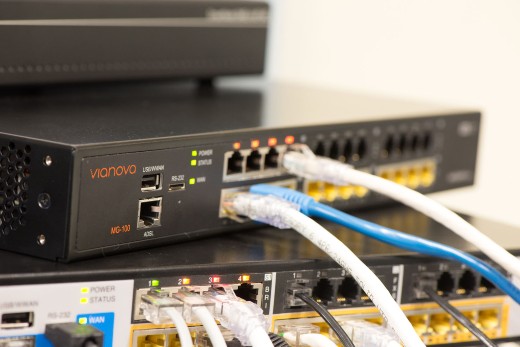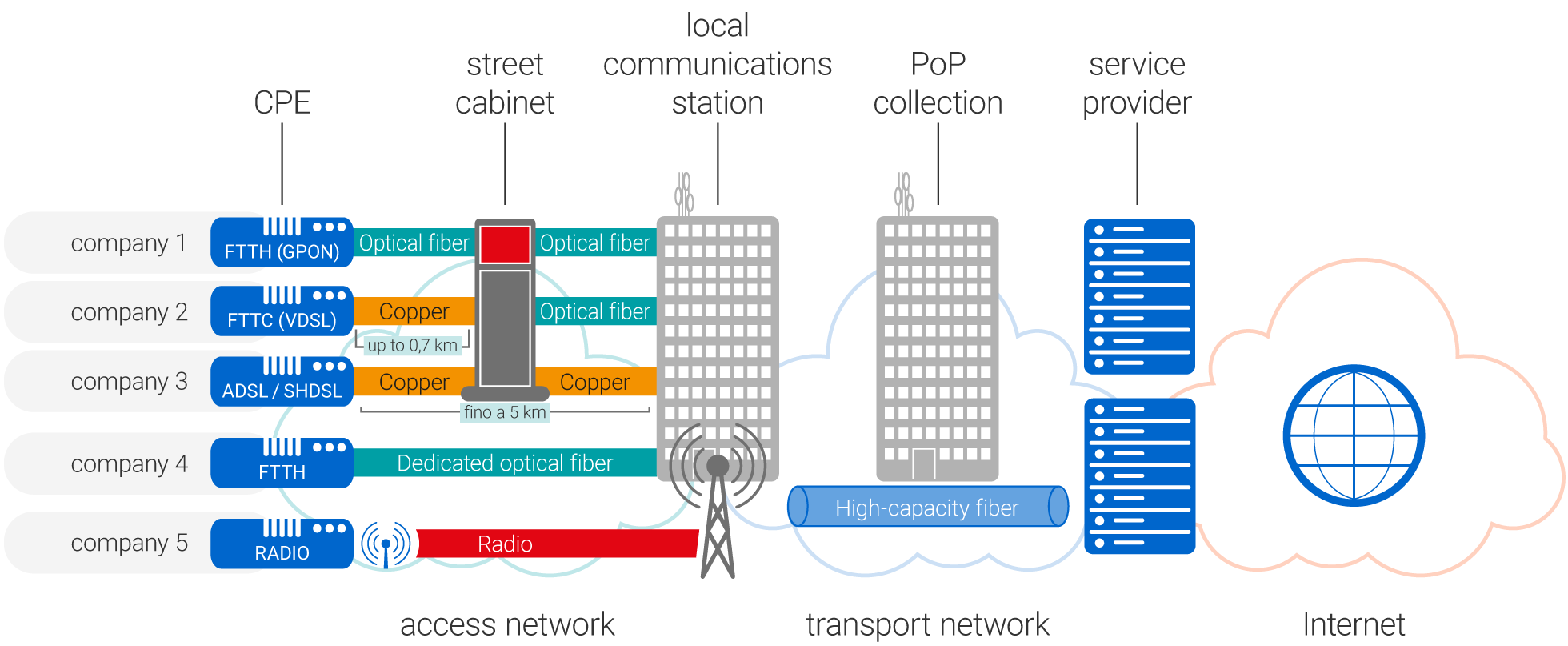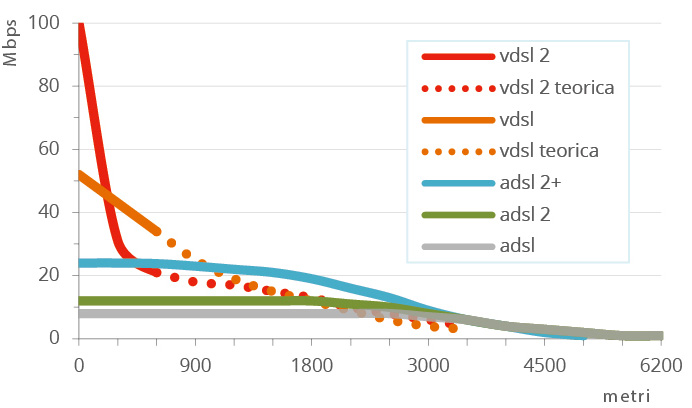Telecommunication networks
Access Network
The access network (the so-called ‘last mile’) is the network that connects the company premises to the first local exchange. It uses various transmission media (Copper, Fiber, or Radio) based on the technology available and the Customer’s bandwidth needs. The most common access technologies use copper and optical fiber, or a combination of the two. The distance from the company’s premises to the street cabinet or the local exchange affects the performance of copper access lines, to the point that it can make it impossible to provide the service.

Transport Network
Transport network is the network that interconnects national and international access networks. It mainly uses high-capacity fiber transmission media. Operators (such as Vianova) and service providers constitute the main network nodes that make up the Internet.
Dedicated or shared optical fiber
Fiber optic connectivity (FTTH) can be dedicated or shared.
Dedicated fiber directly connects the router at the Customer’s premises to the operator’s PoP. Fiber access cable is only used by this one Customer, with a 1:1 ratio. This network architecture ensures consistent performance and greater durability. With shared fiber, the connection passes through a building switch or street cabinet (OLT) before arriving at the PoP and is used by multiple users (1:x). The access performance therefore depends on factors (such as simultaneous use) that must be monitored at all times by the operator to ensure the quality of the service.
Network management
The technological evolution of telecommunication networks has granted operators the opportunity to adopt policies for the management of network resources (known as ‘overbooking’); these policies can pass on significant economies of scale to end Customers. However, compared to the past, these economies – based on the rate at which resources are used simultaneously – require the operator to have a much greater capacity to monitor and control the network to avoid unwanted performance dips due to saturation (so-called ‘bottlenecks’). In practice, any operator aiming to meet challenging quality objectives must be capable of measuring and constantly adapting their services to the real-world habits and needs of their Customers.
Control makes the difference
The ongoing development and increasing availability of services and applications provided through the network have made telecommunication infrastructure a strategic resource for the growth of every company. At Vianova, we strive every day to guarantee the highest standards of service.
For this reason, we created:
- a high-capacity, redundant transport network dedicated exclusively to our Vianova Customers, to allow secure connections with our two Data Centers
- a sophisticated measurement and control system that allows us to monitor Voice and Data traffic divided by individual area in real time in order to scale the transport network with transmission capacities that are always in excess of our Customers’ maximum usage peaks
- an area of our website reserved for Customers where, as part of our commitment to a totally transparent relationship, we display a graph of the actual bandwidth consumption, with the option to individually select each site, updated automatically each minute
Access technologies
- FTTC (Fiber To The Cabinet) – The fiber optic connection comes to an external cabinet very close to the user’s site (normally within 700 meters), and then reaches the site via a copper twisted pair using VDSL or VDSL2 technology
- FTTH (Fiber To The Home) – The fiber optic connection reaches the user’s premises directly. The fiber can be dedicated or shared (e.g. FTTH connectivity with GPON technology)
- xDSL – The user’s premises are served by one or more copper pairs using ADSL (asymmetric) or SHDSL (symmetric) technology connected directly to a DSLAM installed in the local exchange (Central Office)
- Radio – The user’s premises are served by a point-to-multipoint radio connection with shared bandwidth or a point-to-point connection with dedicated bandwidth using HiperLAN or WiMax technologies


















